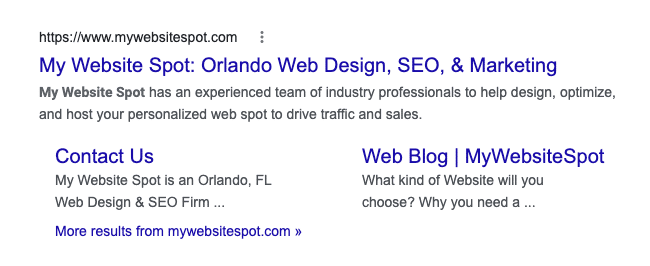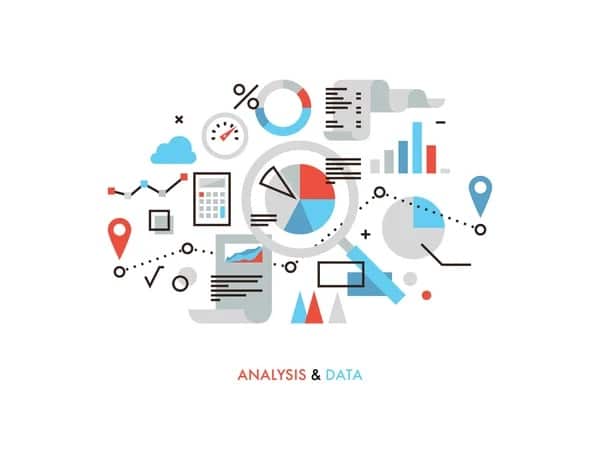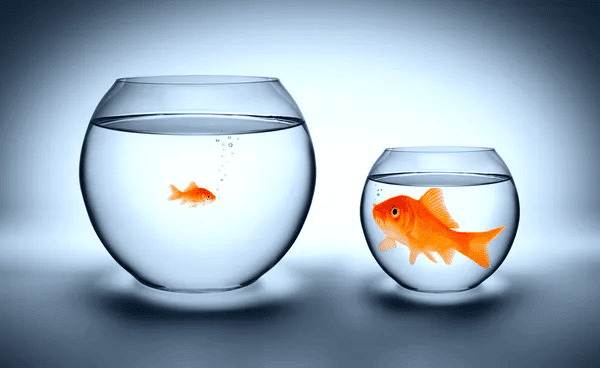Website Content Migration Checklist
There is a lot of information to keep track of when migrating a website, and one of the trickiest to keep straight is moving over the Search Engine Optimization. Making sure that an existing site’s SEO is moved over with the rest of the content is imperative as it will affect the rank of a site. These are the things that we look for when we migrate a website.
- Page URL
- Meta Title
- Meta Description
- Open Graph Images
- Main Headline
- Sub Headings
- Bold Text
- Links
- Quotes
- Downloadable Files
- Images and Alt Tags

With so many things to look for we make sure to carefully migrate the content and double-check our work. Here we will break down some of the common things that everyone should do when they are migrating a website.
Keep Your Page URL The Same (where possible)
The number one issue with migrating content is that the URL changes between platforms. If this is the case it can hurt a site’s SEO as anyone with the old URL won’t be able to find the content they are looking for. Additionally, when they can’t find what they are looking for, they will use a search engine. That means that if the search engine can’t find what it is looking for then it will hurt a site’s ranking.
What If It’s Not Possible To Keep The Same URL?
While keeping the URL the same is VERY important, sometimes it is just not an option. Fortunately, there is a solution to this problem called redirects. A redirect is a way for your website to send a message to a user’s browser to let it know that a page has moved. There are several ways to make a redirect and several different types of redirects, but for our purposes, we are talking about 301 redirects. For the majority of our sites, we use the SEOPress plugin or we create the redirects with your server by updating the .htaccess file. Once the redirects are set up anyone looking for the old URL will be transferred to the new one.
How Do Redirects Effect SEO?
When a redirect is used, any links on a migrated site must be updated to the new URLs as well. If not they will be read as broken links even if the redirect sends a user to the right place in the end. The reason for that is search engines will automatically update their systems to use the new URL. So when it looks at the links on a page and sees that the URL is no longer valid, it reads it as a malformed link. While redirects are great for updating a site’s URL, it is best practice to update a site’s internal linking instead of relying on redirects.
Migrate Your Meta Title & Description

Your meta title could be an answer to a question people might be asking or a message to reach people within the search engines. These are also heavily graded by search engines when they are deciding where a site will rank. You can read more about the metrics used by search engines and why they are important here.
During a website migration, it is important to leave meta titles and meta descriptions the same to avoid any shift in rank caused by a “change” in search phrase intents (the new keywords read more here: [link to search phrase intent]). When migrating a website make sure to bring over the meta titles and descriptions, because the ones that are generated in a new system won’t be as good as the ones you write yourself.
Double Check Content Formatting
When you are moving content between two websites something to watch out for is formatting. Sometimes when you are copying and pasting the formatting will break, whether that is font size, missing bullets, or styling. It is a good idea to check that as you are moving content that it looks the same. However sometimes even if looks the same, some platforms do not keep the HTML the same. So how do you know what you need to look for?
Your Main Headlines Are Important
All of the headlines in your content will need to be reviewed. This is how Google will know how in-depth your content goes and what a user will discover. There should always be only one Header 1 <h1> tag, this should be the title of the page. The other headlines should always be in descending order such as <h2>, <h3>, etc. Another thing to look out for is if any of your headlines are just stylized paragraph <p> tags. If they are, you should change these as it will take away any SEO value that they held before.
Lists, Tables, and Quotes - Oh My!
There are no fake Wizards here, but you do have to watch out for the Wicked Witch of the Data Types. When you are migrating a website you need to make sure that the content data types carry over.
Some common issues are:
- Unordered lists become paragraphs with leading special characters
- Ordered lists become paragraphs with numbers
- Tables become malformed and no longer line up properly
- Blockquotes become normal sentences and look like duplicate content

Keeping these the way they are meant to be tells Google that you have well-thought-out and organized content.
Another Overwhelming Note About Links
Backing up a bit, we mentioned that keeping links the same is important, so you want to watch out when you are copying over links between sites. There are a few issues you can run into when doing this:
- The style of the link is copied, but no link exists
- An external link was copied, but it no longer opens in a new tab
- A link was copied, but the no-follow tag is no longer set
- A link was copied, but the title of the link is no longer set
- A link was copied, but the link is now broken
Links are important to the structure of the website and we can’t stress enough the need to double-check these. Make sure they work! If you know the link is right, but the content is no longer available or has been moved, this is the perfect chance to fix it. Broken links are bad for site visitors and bad for SEO.
Image Optimization and Alt Text
Images, like links, can break during a website’s migration, it is always a good idea to verify that your images are in the correct places during a migration. When moving between websites it is common for an image’s URL to change so make sure to double-check that they all load correctly.
Images also contain a description that is set in the alt attribute of the tag. Be sure to move these over to avoid losing SEO for your images.
Open Graph Images - What The Heck Are Those?
If you have ever shared a website on social media you have seen an open graph image! These are often automatically generated on newer platforms, but that is not always a good thing. The images that are pulled for an auto-generated open graph might not look as good as one purposeful made for an open graph image. This “image preview” might not impact your site’s SEO directly but it will impact how others preview your website.
So make sure that you take a moment to make sure the right ones are being used, and if not, update them.

This image would not work as an open graph image for My Website Spot, just how the bowls do not fit the fish.
So Why Keep It All The Same?
When migrating your website you want as little movement as possible unless it’s for an improvement in rank. This allows you to diagnose any issues and figure out where they may occur on a new system. If your website’s rank increases and nothing was changed then you know that the technical updates provided by your new system have helped tremendously.



